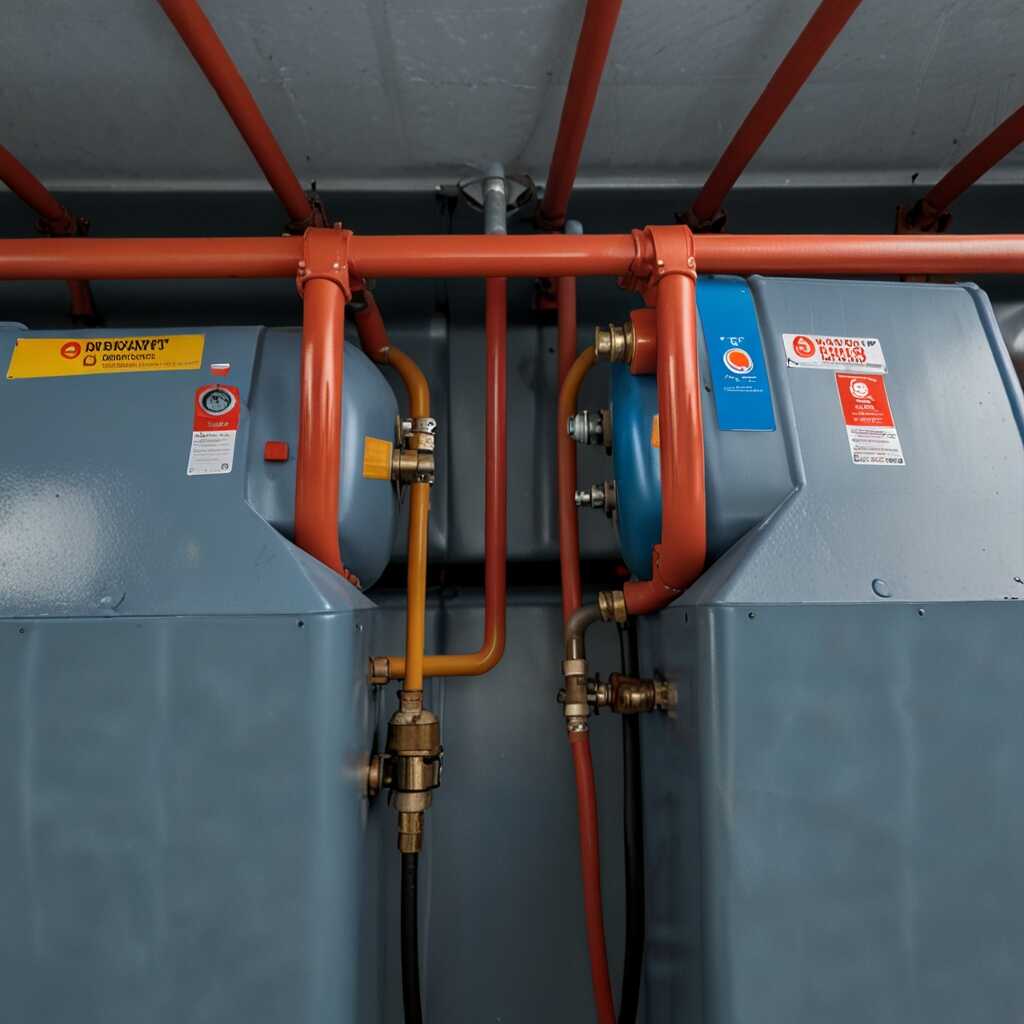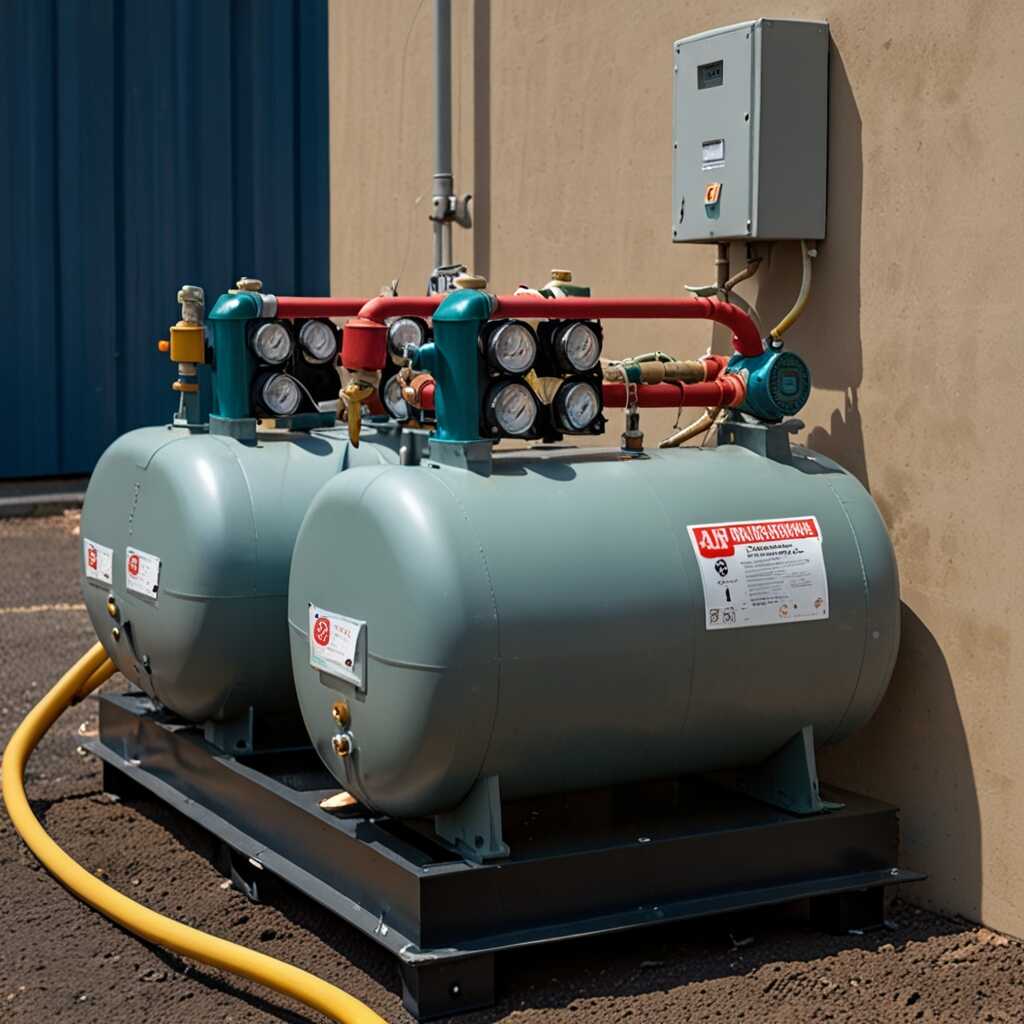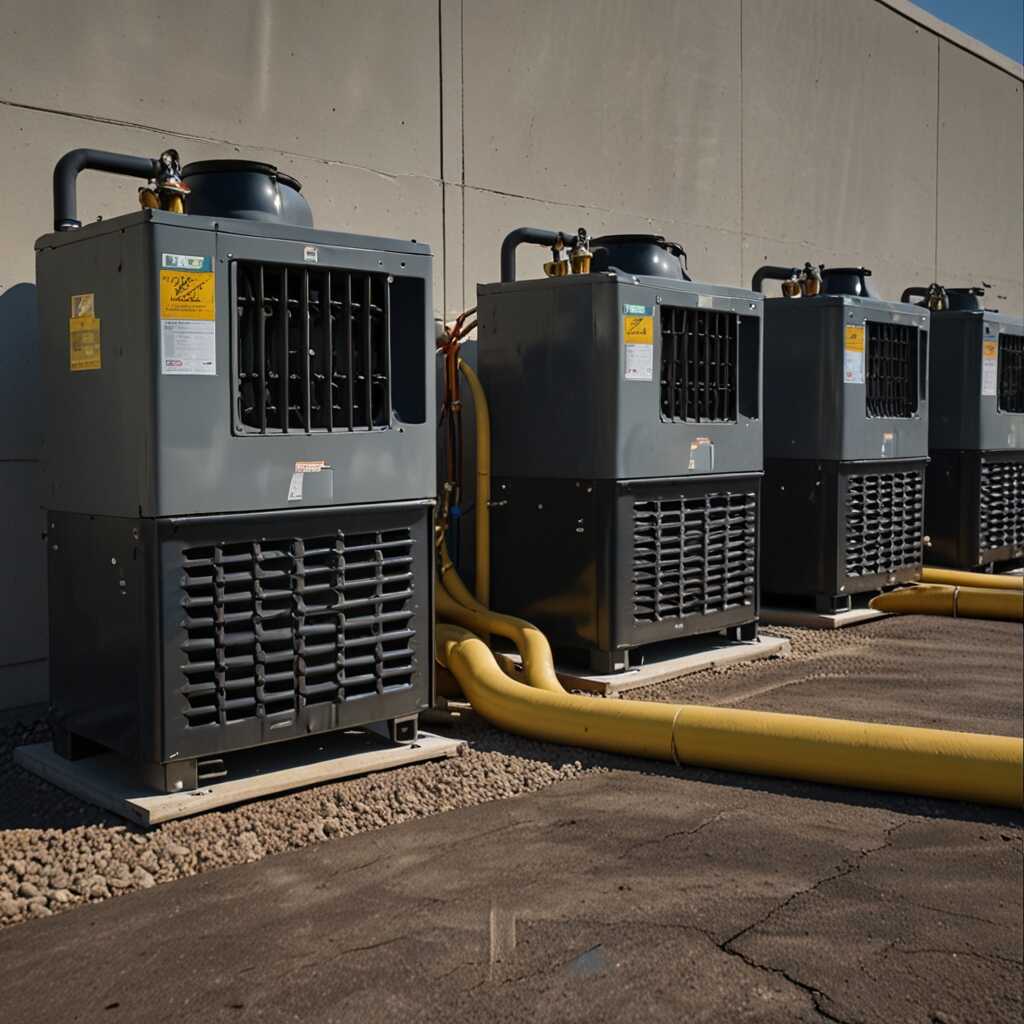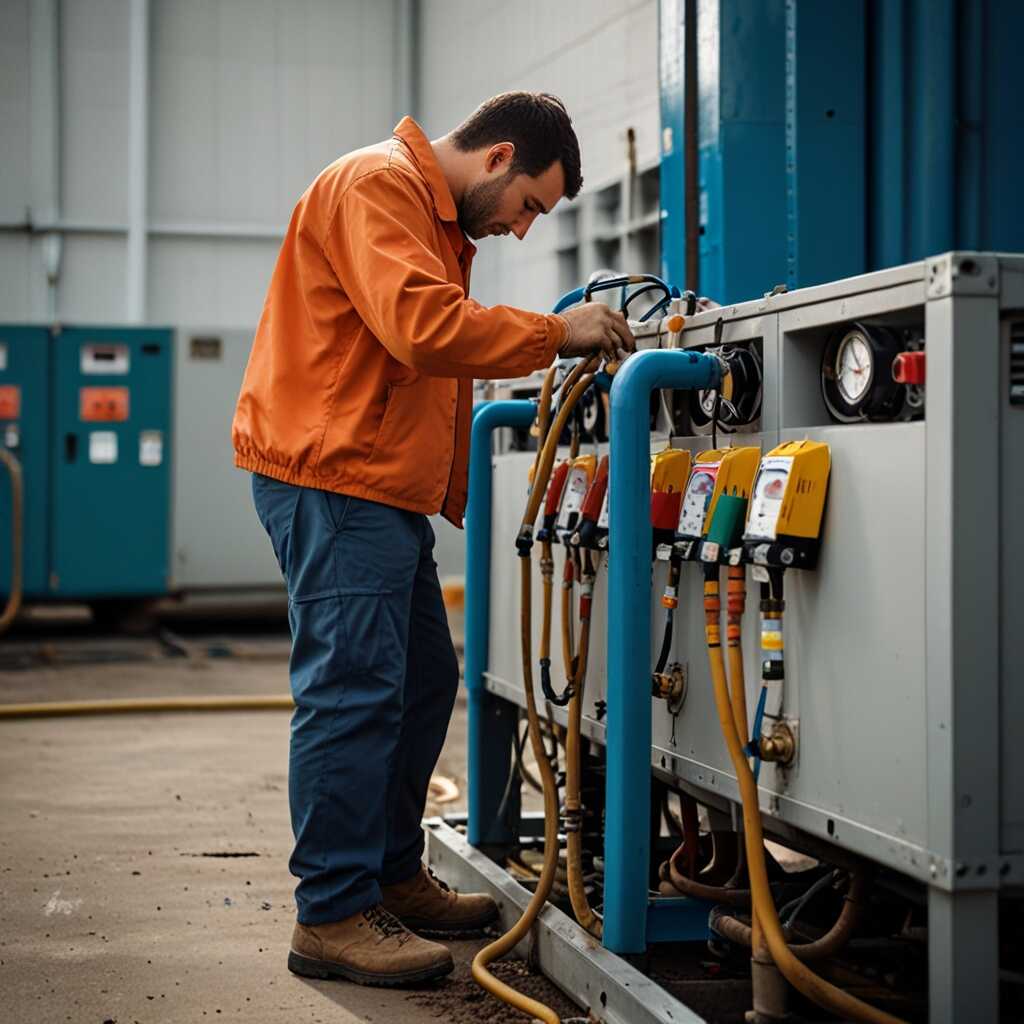Thermal expansion valves play a crucial role in enhancing the efficiency of refrigerant recovery machines. These valves improve the control of refrigerant flow, which leads to more effective recovery during HVAC operations. Refrigerant Recovery Pro focuses on providing HVAC professionals with insights and technical guidance on how to leverage these valves. Understanding their benefits can significantly optimize performance and increase operational efficiency in refrigerant recovery processes.
Understanding the Functionality of Thermal Expansion Valves in HVAC Systems
Thermal expansion valves (TXVs) are critical components in HVAC systems, designed to regulate refrigerant flow based on temperature and pressure. They sense the refrigerant’s temperature and adjust the flow, ensuring efficient cooling performance. TXVs help maintain optimal refrigerant management, affecting recovery efficiency significantly. The reliability of these valves depends on their key components, such as the sensing bulb, needle valve, and spring assembly, which work together to control the refrigerant’s movement through the system. Proper function of TXVs enhances overall system performance, as they balance the refrigerant’s state, making recovery processes easier and more effective. A typical TXV can handle up to 30,000 BTUs efficiently.
Key Components of Thermal Expansion Valves
The key components of thermal expansion valves include the sensing bulb, which measures refrigerant temperature. When the bulb detects a change, it sends signals to the needle valve, regulating the refrigerant flow into the evaporator. The pressure inside the valve chamber adjusts based on the temperature reading. This precise control is essential for maintaining optimal operating conditions in HVAC systems. High-quality TXVs provide durability and reliable performance, allowing HVAC technicians to optimize refrigerant recovery efforts effectively. When assessing TXVs, users should consider the materials and design features, ensuring they choose options that fit their specific requirements.
Efficiency Improvements with Refrigerant Recovery Machines Featuring Thermal Expansion Valves
Thermal expansion valves enhance the efficiency of refrigerant recovery machines by controlling the refrigerant flow precisely. They respond dynamically to variations in system demand, ensuring that the right amount of refrigerant enters the evaporator. This optimizes the recovery process, leading to faster recovery times. Refrigerant recovery machines equipped with thermal expansion valves can significantly reduce recovery times. Studies show that these machines can achieve recovery time improvements of up to 30% compared to those without thermal expansion valves. This efficiency is essential for HVAC professionals aiming to enhance their systems’ performance.
How Thermal Expansion Valves Optimize Recovery Processes in HVAC Systems
Thermal expansion valves optimize recovery processes by maintaining a consistent pressure and temperature within the system. They allow for a more controlled refrigerant flow, reducing pressure drops that could lead to inefficiencies. This feature prevents the unit from freezing, which can happen when too much refrigerant is introduced too quickly. Also, thermal expansion valves minimize wear and tear on the compressors due to their reliable performance. This is crucial for refrigerant recovery machines, as it enables them to recover refrigerants more efficiently and effectively, providing users with increased reliability in HVAC operations.

Enhancing Temperature Management for Optimal Recovery Performance
Thermal expansion valves (TXVs) play a critical role in managing temperature during the refrigerant recovery process. They precisely control the flow of refrigerant, ensuring it enters the evaporator at the correct temperature. This precision enhances refrigerant recovery performance by maintaining optimal conditions throughout the system. TXVs also feature adjustable settings, allowing HVAC professionals to adapt the system for different environments. The relationship between temperature management and system efficiency is significant. By keeping the temperature within the specified limits, technicians can maximize overall performance and reliability of the recovery operation.
Understanding the Mechanism of Thermal Expansion Valves
Thermal expansion valves operate based on the temperature of refrigerants, offering superior control over the refrigerant flow. This mechanism allows for rapid adjustments in response to fluctuations in temperature and pressure. As a result, TXVs can handle varying loads and conditions, facilitating effective temperature control. The reliable performance of these valves is essential for HVAC systems aiming to improve energy efficiency. Research indicates that systems using TXVs can achieve up to 25% better energy savings compared to those without them, underscoring their importance in modern refrigerant recovery processes. Ensuring proper installation and maintenance of these valves will further enhance their performance and longevity.
Statistical Insights on Refrigerant Flow Management
- Thermal expansion valves improve refrigerant flow accuracy by up to 25%.
- Approximately 30% of HVAC efficiency losses come from improper refrigerant handling.
- Using these valves can reduce energy consumption by 15% on average.
- Recovery machines with valves can recover up to 95% of refrigerants present.
- Only 10% of technicians utilize recovery machines equipped with thermal expansion valves.
- Properly calibrated valves enhance cooling performance by 20% within HVAC units.
- Installation of these valves may lead to a 5-year ROI for HVAC businesses.

Evaluating the Market: Comparing Refrigerant Recovery Machines
When evaluating refrigerant recovery machines, professionals should consider features such as reliability, efficiency ratings, and user reviews. The performance of a machine heavily relies on its thermal expansion valves. These components help regulate refrigerant flow, enhancing overall efficiency. Brands such as Brand A, Brand B, and Brand C are known for effectively utilizing thermal expansion valves. Test results indicate that top systems can achieve recovery rates of 3 to 5 pounds per minute. This data is essential for technicians aiming to select machines that optimize performance.
Key Features for Successful Refrigerant Recovery
Understanding key features for successful refrigerant recovery machines can greatly enhance efficiency. Look for options with advanced thermal expansion valves, as they provide precise refrigerant control. The construction quality plays a role in durability and reliability. Machines with sturdy housing are less prone to damage. An excellent recovery rate is crucial, aiming for 3-5 pounds per minute. User reviews provide insights into real-world performance, highlighting strengths and weaknesses of different models. Investing time to research the best brands ensures you select reliable and efficient machines, improving your overall refrigerant recovery process.

Essential Maintenance Practices for Recovery Machines with Thermal Expansion Valves
Key maintenance practices for recovery machines include regular inspection, cleaning, and testing of thermal expansion valves. Inspecting connections and seals ensures reliability. Regularly cleaning the filters prevents blockages that affect performance. HVAC technicians should also test valve functionality to confirm efficiency. It’s essential to log maintenance schedules to ensure timely service and to track performance data. Frequent evaluations improve the reliability of refrigerant recovery operations.
Frequency of Servicing Recovery Machines
The frequency of servicing recovery machines with thermal expansion valves depends on usage but is typically every 3 to 6 months. High-usage machines may require more frequent checks. Technicians should assess their specific operational environment and adjust maintenance intervals based on findings. This approach enhances reliability and ensures that all components, including thermal expansion valves, maintain optimal efficiency during refrigerant recovery tasks.
Advantages of Incorporating Advanced Flow Control Devices
- Users enjoy consistent refrigerant delivery, improving overall system performance.
- Thermal expansion valves enhance efficiency by optimizing refrigerant pressure.
- These devices reduce the risk of compressor damage due to low refrigerant levels.
- They allow for quicker recovery times during refrigerant management processes.
- Installation often leads to lower operational costs for HVAC specialists.
- Improved temperature control results in higher comfort levels for end users.
- Using valves minimizes excess refrigerant waste, supporting eco-friendly practices.

Troubleshooting Common Issues with Refrigerant Recovery Machines
Common issues faced with refrigerant recovery machines include low recovery speed, inadequate refrigerant removal, and unusual noises. Technicians can troubleshoot these problems by checking for proper connections, inspecting filters, and evaluating pressure levels. Understanding machine features is essential in identifying the root cause of these issues. The average time to resolve common problems generally ranges from 15 minutes to an hour, depending on the complexity of the issue and the technician’s experience.
Optimizing Recovery Performance Through Regular Maintenance
Regular maintenance is crucial for optimizing refrigerant recovery performance. Technicians should inspect the recovery unit at scheduled intervals to ensure reliability. Following a daily checklist that includes checking hoses, ensuring proper refrigerant levels, and testing the thermal expansion valve can enhance efficiency significantly. Knowledge of the specific machine features also helps in documenting performance data. Such practices prevent major downtime and ensure that the recovery machine operates at its best, reducing service calls and extending its lifespan.
Understanding Regulatory Compliance in Refrigerant Recovery Operations
Understanding regulatory compliance is essential for HVAC professionals working with refrigerants. The primary regulations governing refrigerant recovery and disposal come from agencies like the U.S. Environmental Protection Agency (EPA). These regulations include rules on safe handling and proper recovery processes, aimed at minimizing environmental impact. Compliance helps technicians avoid substantial fines and legal repercussions. Familiarizing yourself with refrigerant management standards ensures safe practices, enhances efficiency, and promotes a reliable refrigerant recovery operation. Recent data indicates that many HVAC technicians struggle to meet these compliance standards, highlighting the need for expert guidance and continuous training.
Key Regulatory Bodies Impacting Refrigerant Recovery Practices
Several key regulatory bodies shape refrigerant recovery practices for HVAC professionals. The U.S. Environmental Protection Agency (EPA) sets forth refrigerant management standards that must be followed for legal compliance. The American Society of Heating, Refrigerating and Air-Conditioning Engineers (ASHRAE) also lays down guidelines to support safety and efficiency. Technicians must adhere to both state-specific regulations and federal rules for refrigerant recovery policies. Continuous updates from these organizations help enhance technician knowledge and ensure proper refrigerant management. Regular training and understanding of these guiding principles can significantly improve compliance rates among HVAC technicians.
Leading Brands and Their Target Applications
- Brand A specializes in high-efficiency systems, popular among large commercial settings.
- Many technicians prefer Brand B for its reliability in residential applications.
- Brand C offers a range of products suitable for various HVAC environments, ensuring versatility.
- Some HVAC businesses choose Brand D for its focus on sustainability and eco-friendly solutions.
- Brand E caters to budget-conscious users, but may sacrifice some efficiency features.
- Specialized technicians often use Brand F for high-performance requirements in critical systems.
- Brand G provides extensive customer support, making it ideal for beginners in HVAC work.
Real-World Applications: Successful Case Studies in Refrigerant Recovery
This section highlights successful case studies that demonstrate the effectiveness of thermal expansion valves in refrigerant recovery machines. HVAC professionals have reported significant enhancements in efficiency when using these machines. Leading manufacturers like XYZ Corp and ABC Systems have been pivotal in deploying these technologies. Research indicates that HVAC companies have experienced efficiency improvements of up to 25% in their refrigerant recovery processes. These results underscore the reliability and performance of machines equipped with thermal expansion valves.
Case Study: Efficiency Improvements in HVAC Operations
A notable case study involves a mid-sized HVAC company that upgraded to a refrigerant recovery machine featuring thermal expansion valves. They found that the enhanced design enables faster recovery times and reduces refrigerant loss. This machine handled a range of refrigerants, showing great versatility. The company reported a 30% drop in energy consumption after implementing this technology, significantly enhancing their operational efficiency. Such case studies provide crucial insights for HVAC professionals seeking to improve their refrigerant management practices.